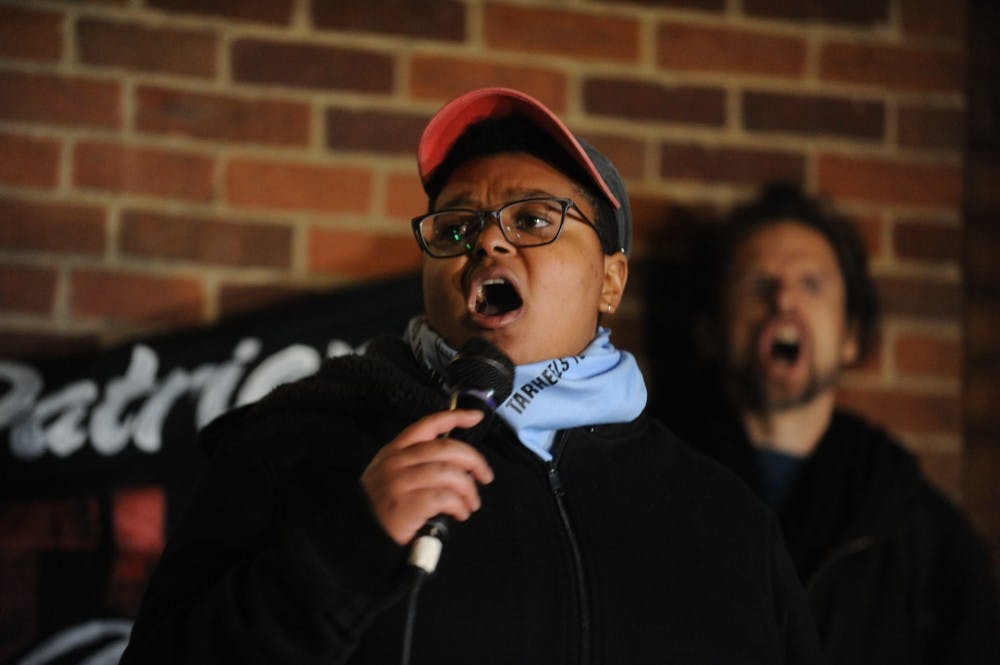Maya Little, the embattled UNC Ph.D. student at the forefront of Silent Sam’s opposition, turned herself in at the Orange County Courthouse on Tuesday, on charges of inciting a riot and assault on an officer stemming from a protest Monday night.
During the protest, a mass of people marched from the Peace and Justice Plaza toward South Building. The demonstration was organized in response to the Board of Trustees' recommendation that a freestanding building be built to house the displaced Confederate monument.
Monday night’s incident was the latest development in a series of legal struggles that have consumed the past year of her life, made her a leader in the anti-Silent Sam community and have forced a public discussion on the meaning of contextualization.
Little became involved in organizing protests in September 2017, when she joined the ranks of the 24-hour occupiers who were ubiquitous in McCorkle Place last fall. She felt compelled to join the movement after the around-the-clock protesters “had their belongings confiscated and were told to leave by campus police,” she said.
“That includes being at the statue last semester every day,” she said, “to host the sit-in with our signs that provided context about the statue and its history and it being a white supremacist, racist monument.”
In November 2017, she received publicity for identifying a fellow protester as an undercover UNC police officer. He had been posing as an auto mechanic from Durham, vocal in his distaste for Silent Sam. She saw the officer, Hector Borges, working in uniform after the McCorkle Place explosion last year.
Tension surrounding the statue amplified throughout last fall, following the removal of a Robert E. Lee monument on Duke’s campus and the death of a protester at the Unite the Right rally in Charlottesville.
In April, Little took buckets of paint, and her own blood, and threw them on the statue. She was arrested following the incident, which started her ongoing legal battle with the University and Orange County.
“I smeared my blood and red ink on the statue because the statue was lacking proper historical context,” she told the DTH. “So these statues were built on Black blood. These statues symbolize the violence toward Black people. Without that blood on the statue, it’s incomplete, in my opinion. It’s not properly contextualized.”




